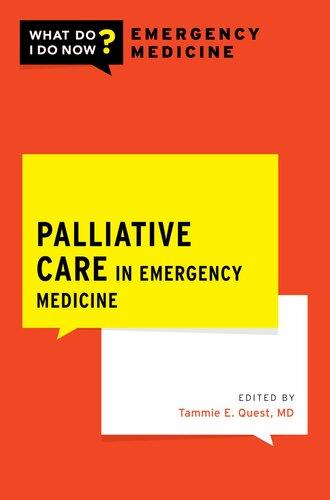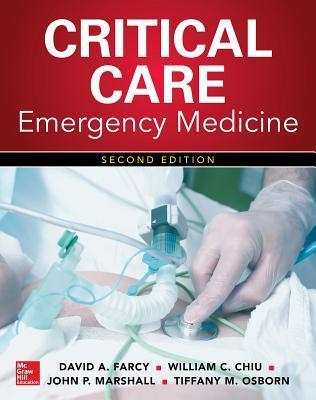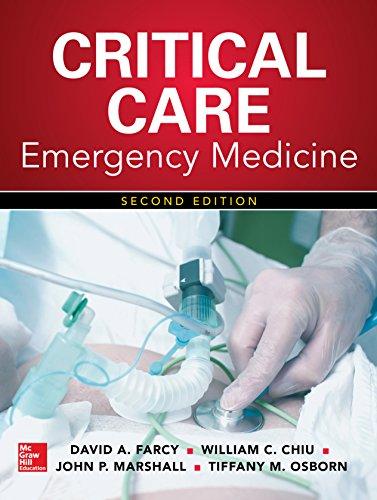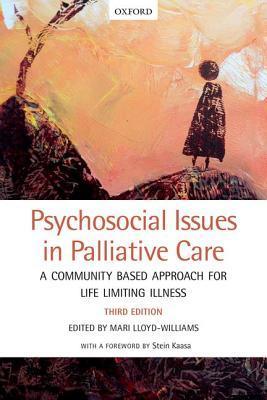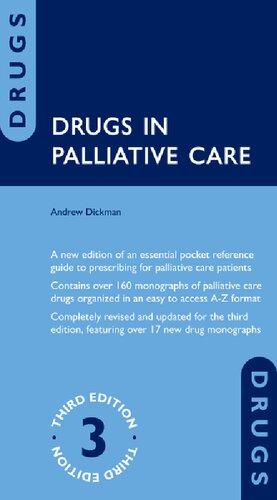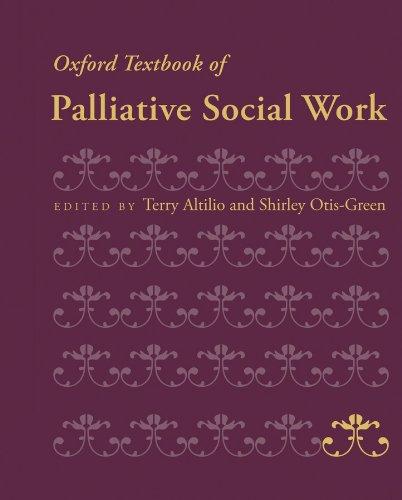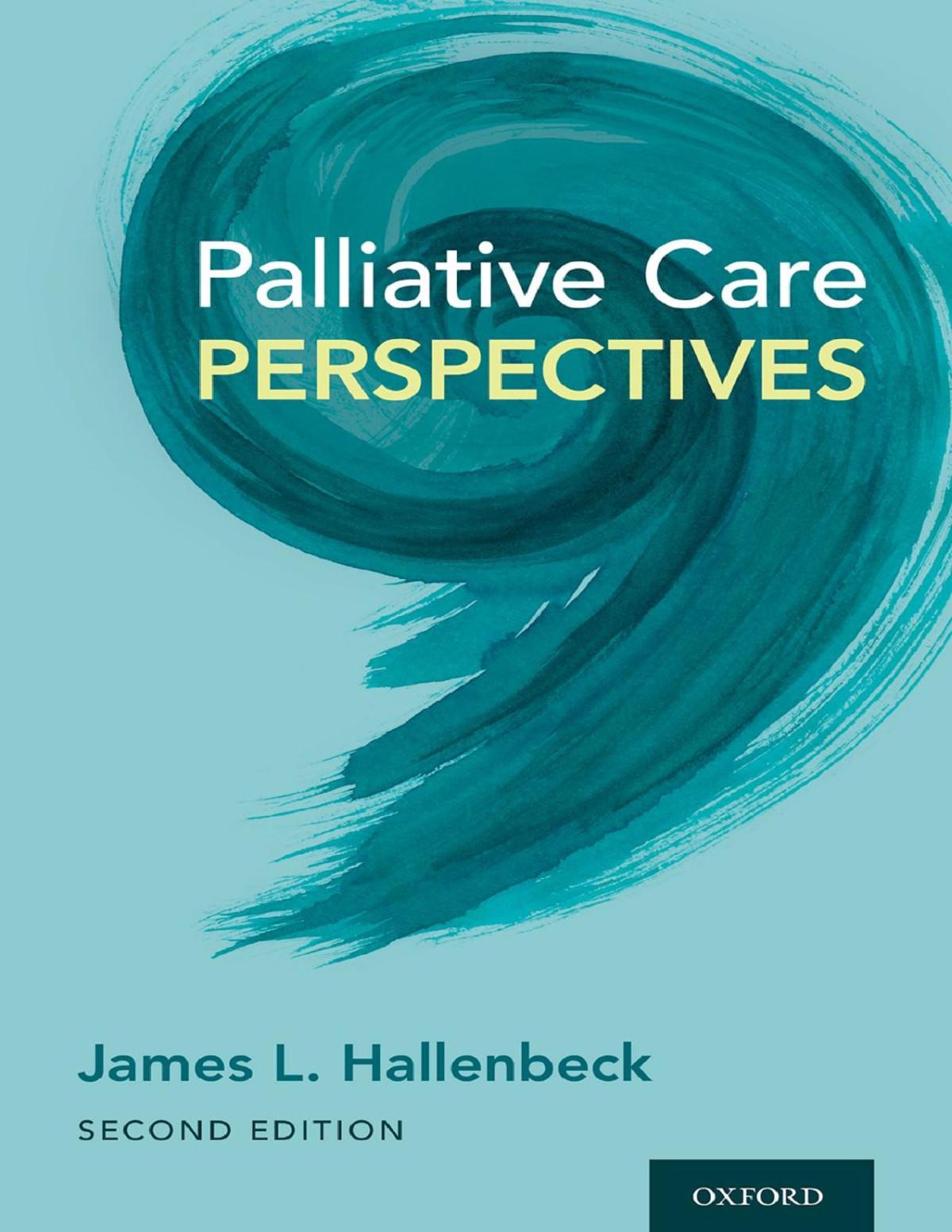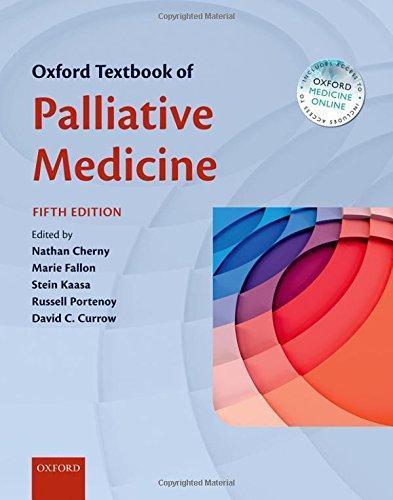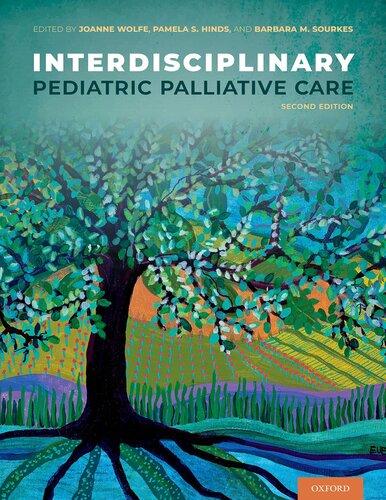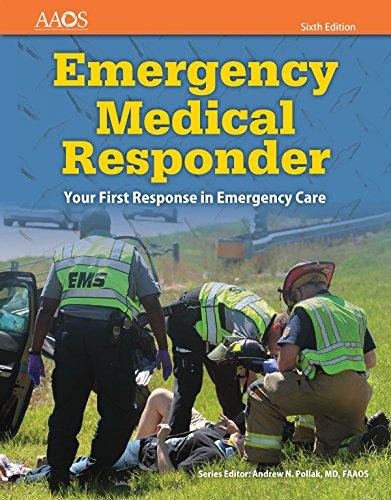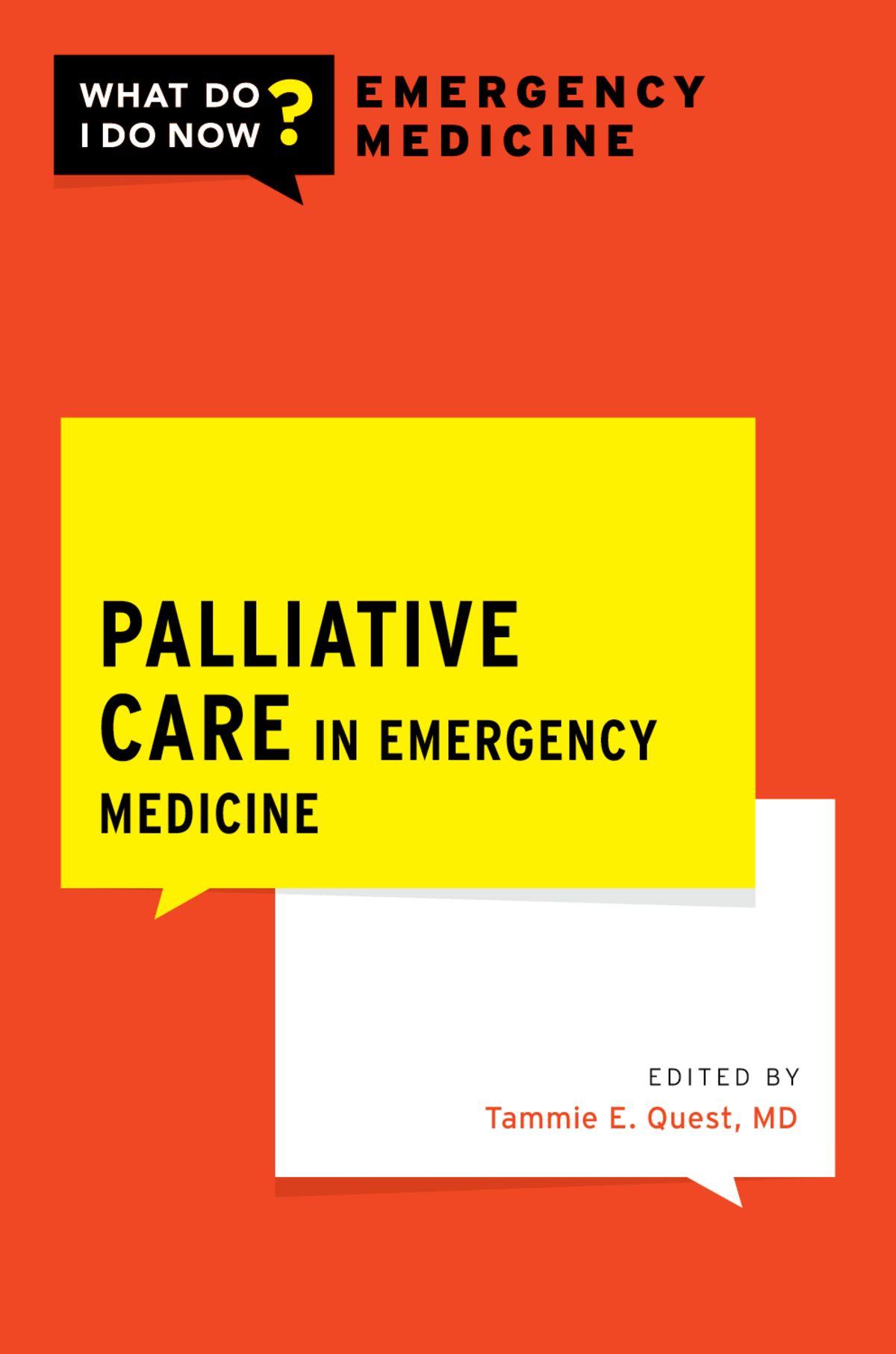WhatDo IDo Now?: Emergency Medicine
SERIES EDITOR-IN-CHIEF
Catherine A. Marco, MD, FACEP
Professor, Emergency Medicine & Surgery
Wright State University Boonshoft School of Medicine
Dayton, Ohio
OTHER VOLUMES IN THE SERIES
Pediatric Medical Emergencies
Pediatric Traumatic Emergencies
Legal and Ethical Issues in Emergency Medicine
Critical Care Emergencies
Psychiatric Emergencies
Disaster Preparedness and Response
Palliative Care in Emergency Medicine
Palliative Care in Emergency Medicine
Editedby Tammie E. Quest, MD
Oxford University Press is a department of the University of Oxford. It furthers the University’s objective of excellence in research, scholarship, and education by publishing worldwide. Oxford is a registered trade mark of Oxford University Press in the UK and certain other countries.
Published in the United States of America by Oxford University Press 198 Madison Avenue, New York, NY 10016, United States of America.
© Oxford University Press 2023
All rights reserved. No part of this publication may be reproduced, stored in a retrieval system, or transmitted, in any form or by any means, without the prior permission in writing of Oxford University Press, or as expressly permitted by law, by license, or under terms agreed with the appropriate reproduction rights organization. Inquiries concerning reproduction outside the scope of the above should be sent to the Rights Department, Oxford University Press, at the address above.
You must not circulate this work in any other form and you must impose this same condition on any acquirer.
Library of Congress Cataloging-in-Publication Data
Names: Quest, Tammie E., editor.
Title: Palliative care in emergency medicine / [edited by] Tammie E. Quest.
Other titles: What do I do now?: Emergency medicine.
Description: New York, NY : Oxford University Press, [2023] |
Series: What do i do now?: Emergency medicine | Includes bibliographical references and index.
Identifiers: LCCN 2022040662 (print) | LCCN 2022040663 (ebook) | ISBN 9780190073824 (paperback) | ISBN 9780190073848 (epub) | ISBN 9780190073855 (online)
Subjects: MESH: Palliative Care | Emergencies | Case Reports
Classification: LCC R726.8 (print) | LCC R726.8 (ebook) | NLM WB 310 | DDC 616.02/9—dc23/eng/20221206
LC record available at https://lccn.loc.gov/2022040662
LC ebook record available at https://lccn.loc.gov/2022040663
DOI: 10.1093/med/9780190073824.001.0001
This material is not intended to be, and should not be considered, a substitute for medical or other professional advice. Treatment for the conditions described in this material is highly dependent on the individual circumstances. And, while this material is designed to offer accurate information with respect to the subject matter covered and to be current as of the time it was written, research and knowledge about medical and health issues is constantly evolving and dose schedules for medications are being revised continually, with new side effects recognized and accounted for regularly. Readers must therefore always check the product information and clinical procedures with the most up-to-date published product information and data sheets provided by the manufacturers and the most recent codes of conduct and safety regulation. The publisher and the authors make no representations or warranties to readers, express or implied, as to the accuracy or completeness of this material. Without limiting the foregoing, the publisher and the authors make no representations or warranties as to the accuracy or efficacy of the drug dosages mentioned in the material. The authors and the publisher do not accept, and expressly disclaim, any
responsibility for any liability, loss, or risk that may be claimed or incurred as a consequence of the use and/or application of any of the contents of this material.
Jason
Time
Emily Zametkin and Kei Ouchi
Julie Mitchell and Joanne Kuntz
“Read
Alina M. Fomovska and Eric Isaacs I’m
Daniel
Kate
Tammie
Gretchen
Kirsten G.
Ashley
Judgment Awaits
Joanne Kuntz
Let’s Get It Right
Sangeeta Lamba and Rebecca Goett
Just Call 911
Marie-Carmelle Elie
“God Help Us”
Liliana Viera-Ortiz and Clariliz Munet-Colón
“Mine, No . . . Mine”
Jay M. Brenner
Global Aspect of Palliative Care
Emilee Flynn and Imad El Majzoub
Caught in the Middle
Cynthia S. Romero and Lekshmi Kumar
From What to How
Audrey Tan and Danielle Stansky
Not One More Thing
Carter Neugarten and David Wang
Index
Preface
Palliative care in the emergency department? What is that? This question is often asked among emergency department colleagues and peers—much less so now than in the past. While it has been nearly two decades since palliative care in the emergency department setting became a focus of study and organized implementation of optimal palliative care delivery, emergency clinicians have always faced caring for patients of all ages with serious, life-threatening, and advanced illness in the emergency department. It was not until the evolution of the practice of hospitalbased palliative care that a real appreciation developed by those within and outside of the emergency department, setting the real and potential impact that providers in the emergency department with optimized palliative care knowledge and skill might have on the care of patients with serious illness. Over these two decades, the emergency department–specific and wider palliative care literature has burgeoned to demonstrate improved models of palliative care within and outside of the emergency department with a concomitant burgeoning evidence base. This evidence curve will continue to evolve with care in the emergency department increasingly as a focus. Over the last decade, study after study now has shown that patients who receive palliative care in the emergency setting with and without a palliative care subspecialty consultant have improved clinical outcomes with better symptom management, improved goal concordant care, and more effective resource utilization that delivers improved patient-centered outcomes. Palliative care is now widely known as the physical, spiritual, psychological, and social care provided from diagnosis to death or cure of a life-threatening illness provided at any stage of illness and inany setting. Palliative care in the emergency department is fundamentally meeting a seriously ill
patient and family wherever they are, be it in pain or in cardiac arrest, and providing the best care possible—not only focused on disease reversal. Palliative care in the emergency setting is the clinician formulating a multidimensional assessment that includes mitigation of suffering and distress in all its forms. For some patients that might require not just an assessment of what can be done but what should be done based on the patient and families’ goals and values. Sometimes this might include breaking bad news or helping mitigate severe breathlessness while also treating sepsis and much more. The lynchpin to effective palliative care in the emergency department is the emergency clinician.
Palliative Care in Emergency Medicine is intended to serve as a practical resource to the emergency clinicians on the frontlines of emergency care. Imperative to the practicing emergency clinician in delivering palliative care in the emergency setting in a practical way is to understand it in breadth, concept, and practice. While not exhaustive as a textbook, this book will cover a wide variety of critical areas in palliative care in the emergency setting in a format that the clinician can easily grasp and follow: case discussion. Each chapter is authored by an emergency clinician, often paired with a palliative medicine subspecialist to consider care options. In many cases, the author is both an emergency clinician and palliative medicine subspecialist. Each chapter opens with a typical emergency department clinical case that any emergency department clinician across the globe might be asked to manage, followed by a discussion, conclusion, and suggested readings. The discussion is meant to focus on the practical aspects of working in emergency care that is often punctuated by incomplete information and stressors felt by the patient, the family, and the clinician. The suggested readings represent key articles that inform the discussion and encourage the reader to go further in depth on the topic at hand. Some key areas explored through case discussion format include an overarching understanding of emergency department palliative care; critical communications; advance care planning; symptom management; care for special populations (children, patients in hospice care, and those that need hospice care); cultural,
spiritual, and ethical aspects of care; and palliative care delivery in the emergency department and in prehospital and international settings.
A practical understanding of palliative care in the emergency setting brings our desire to help one step closer for our sickest patients. Every practicing emergency clinician desires the same thing for their patient and their loved ones as we encounter their suffering: the best possible outcome in the context of an imperfect circumstance. We want to be a positive vehicle of help, support, and kindness to mitigate fear and instill hope. Hope that though we are not able to change the circumstance, we can optimize its outcome. We are trained to make that contribution in a skilled, empathic manner in the context of uncertainty, in unfamiliar surroundings with all under stress.
I thank all the authors of this book for their time and effort to bring palliative care to their colleagues and peers. They are among the truly committed. This book is dedicated to them and all of the emergency clinician palliative care mavericks that came before and will come ahead to build and evolve this incredible field of palliative care in the emergency setting.
Contributors
Kate Aberger, MD, FACEP
Medical Director
Division of Palliative Medicine and Geriatrics
St. Joseph’s Health
Paterson, NJ, USA
Daniel Bell, MD
Assistant Professor
Division of Palliative Medicine
Emory University School of Medicine
Atlanta, GA, USA
Gretchen E. Bell, MD
Assistant Professor
Division of Palliative Medicine
Emory University School of Medicine
Atlanta, GA, USA
Jason K. Bowman, MD
Instructor and Clinical Attending Physician
Department of Emergency Medicine
Department of Psychosocial
Oncology and Palliative Medicine
Brigham and Women’s Hospital
Dana Farber Cancer Institute
Harvard Medical School
Boston, MA, USA
Laura Brachman, MD
Assistant Professor
Division of Palliative Medicine
Emory University School of Medicine
Atlanta, GA, USA
Jay M. Brenner, MD
Associate Professor
Department of Emergency Medicine
SUNY-Upstate Medical University
Syracuse, NY, USA
Arthur Derse, MD, JD
Professor
Center for Bioethics and Medical Humanities
Department of Emergency Medicine
Medical College of Wisconsin Milwaukee, WI, USA
Paul L. DeSandre, DO, FACEP, FAAHPM
Associate Professor
Department of Emergency Medicine
Department of Family and Preventive Medicine, Division of Palliative Medicine
Emory University School of Medicine
Atlanta, GA, USA
Marie-Carmelle Elie, MD, FACEP, FCCM, RDMS
Professor & Chair
Department of Emergency Medicine
University of Alabama, Birmingham Birmingham, AL, USA
Kirsten G. Engel, MD
Section of Palliative Care
Division of General Medicine
Beth Israel Deaconess Medical Center
Boston, MA, USA
Emilee Flynn, MD, MPH
Assistant Professor
Attending Physician, Pediatric Advanced Care Team
Children’s Healthcare of Atlanta
Department of Pediatrics
Emory University School of Medicine
Atlanta, GA, USA
Alina M. Fomovska, MD
Assistant Professor
Department of Emergency Medicine
Jefferson University
Philadelphia, PA, USA
Rebecca Goett, MD, FACEP, FAAHPM
Associate Professor
Department of Emergency Medicine and Palliative Care
Rutgers New Jersey Medical School
Newark, NJ, USA
Eric Isaacs, MD
Professor
Department of Emergency Medicine
Zuckerberg San Francisco General Hospital
University of California, San Francisco
San Francisco, CA, USA
Lekshmi Kumar, MD, MPH
Associate Professor
Department of Emergency Medicine
Section of Prehospital and Disaster Medicine
Emory University School of Medicine
Atlanta, GA, USA
Joanne Kuntz, MD, FAAHPM, FACEP
Associate Professor
Department of Family and Preventive Medicine
Division of Palliative Medicine
Emory University School of Medicine
Atlanta, GA, USA
Sangeeta Lamba, MD, MS-HPEd Professor
Department of Emergency Medicine
Rutgers New Jersey Medical School
Rutgers University
Newark, NJ, USA
Imad El Majzoub, MD
Consultant of Emergency Medicine
Associate Professor
Sheikh Shakhbout Medical City—Mayo Clinic
Khalifa University
Abu Dhabi, United Arab Emirates
Julie Mitchell, DO
Assistant Professor
Department of Family and Preventive Medicine
Division of Palliative Medicine
Emory University School of Medicine
Atlanta, GA, USA
Clariliz Munet-Colón, MD
Department of Otolaryngology-HNS
University of Puerto Rico
San Juan, Puerto Rico
Carter Neugarten, MD
Assistant Professor
Departments of Internal Medicine and Emergency Medicine, Section of Palliative Care
Director of Palliative Emergency Care
Rush University Medical Center
Chicago, IL, USA
Kei Ouchi, MD, MPH
Assistant Professor
Department of Emergency Medicine
Brigham and Women’s Hospital
Harvard Medical School
Boston, MA, USA
Tammie E. Quest, MD, FAAHPM
Professor
Director, Emory Palliative Care Center
Department of Family and Preventive Medicine
Chief, Division of Palliative Medicine
Department of Emergency Medicine
Emory University School of Medicine
Atlanta, GA, USA
Cynthia S. Romero, MD
Assistant Professor
Department of Emergency Medicine
Section of Prehospital and Disaster Medicine
Emory University School of Medicine
Atlanta, GA, USA
Monique Schaulis, MD, MPH
Senior Physician
The Permanente Medical Group
Volunteer Clinical Faculty, UCSF
San Francisco, CA, USA
Ashley Shreves, MD
Department of Emergency Medicine
Department of Palliative Care
Ochsner Medical Center
New Orleans, LA, USA
Danielle Stansky, MD
Resident Physician
Ronald O. Perelman Department of Emergency Medicine
New York University School of Medicine
New York, NY, USA
Audrey Tan, DO
Regional Medical Officer
Landmark Health
Optum Home and Community
New York, NY, USA
Liliana Viera-Ortiz, MD
Department of Surgery
University of Puerto Rico
San Juan, Puerto Rico
David Wang, MD
Director
Department of Palliative Medicine
Scripps Health
San Diego, CA, USA
Emily Zametkin, MBBS
Assistant
Department of Medicine
Palliative Care and Emergency Medicine
University of Massachusetts Chan
Medical School—Baystate
Springfield, MA, USA
1 Here We Go Again
Jason K. Bowman
Case: A 72-year-old woman with advanced heart failure and oxygendependent chronic obstructive pulmonary disease presents to the emergency department (ED) with severe shortness of breath with blood pressure of 70/40 mmHg, heart rate of 140 beats per minute, respiratory rate of 40 per minute, and oxygen saturation of 85% on 2 L. On arrival to the ED, she is placed on noninvasive ventilation and administered furosemide 80 mg IV once. After 1 hour, she is clinically improved and able to be removed from the noninvasive ventilation. Radiographs and laboratory data are consistent with a new non-ST elevation myocardial infarction and heart failure exacerbation. She will be admitted to the intensive care unit. She reports that she lives alone in a senior living apartment, and that she has been having more trouble at home over the last month. The patient’s neighbor was doing grocery shopping for her and getting her medications, but this individual was recently hospitalized as well. For the last 2 weeks she has been eating easy-to-reheat meals. She is widowed but has three adult children who live in the area. Over the last 6 months she has had three admissions to the hospital, and she does not have an advance care planning document.
What do you do now?
PRIMARY EMERGENCY DEPARTMENT PALLIATIVE CARE
Approximately 75% of all older patients visit an ED in the last 6 months of life, and over 50% will visit one in their final month of life.
This case is representative of many patients seen in EDs: advanced age with multiple progressing chronic conditions that are life-limiting, limited social supports, and little if any advance care planning. Depending on community resources, outpatient providers (both primary care and specialists) may increasingly need to rely on EDs to evaluate these complex patients in the serious illness safety net. Unfortunately, many of these patients may suffer from poorly addressed physical, psychological, and social symptoms. Hospitalization can lead to invasive interventions that are frequently not aligned with their wishes. Expert, compassionate management of these challenging patients requires simultaneous disease-directed assessment and management, symptom management, and rapid but thoughtful exploration of goals of care in order to guide treatment decisions.
BACKGROUND
Palliative care focuses on optimizing quality of life throughout the illness spectrum by anticipating, preventing, and relieving suffering. Palliative care is interdisciplinary in nature, focused on the physical, spiritual, psychological, and social aspects of serious illness care—not only in medical management but also in navigating and leading challenging conversations with patients and families. Recognizing the value that palliative medicine offers, the American College of Emergency Physicians (ACEP) has recommended that providers “Don’t delay in engaging available palliative and hospice services in the ED for patients likely to benefit.”
PRIMARY PALLIATIVE CARE IN THE EMERGENCY DEPARTMENT
For various reasons, specialty-trained palliative medicine clinicians are not always available for ED consultation. Unfortunately, there already is a shortage of specialty-trained palliative providers for patients who might benefit, and this is expected to increase significantly in the coming decades. One study estimated that by 2030 there will be one palliative medicine provider for every 26,000 patients in the United
States. Globally, the WHO estimates that each year over 40,000,000 people around the world are in need of palliative care, yet only about 14% of them ever receive it. They believe the global need for palliative care will continue to grow. Given these statistics, there is increasing interest in and focus on training providers from many different specialties, including emergency medicine, in primary palliative care skills.
Providing primary palliative care in the ED requires a fundamental knowledge and set of practiced skills, in order to optimize serious illness care of ED patients. These span topics including interdisciplinary approaches to communication, symptom management, models of care, prognostication, ethical and legal issues, and other skills that should be learned and practiced by all medical providers (see Table 1.1). In 2018, a group of expert dualtrained ED-palliative clinicians and researchers expanded on this idea by describing a primary palliative medicine curriculum outline for ED training programs, based on the Accreditation Council for Graduate Medical Education (ACGME)’s “Milestones” framework.1
Table 1.1 Primary Palliative Care Skills
Pain and Other Symptom Management Care in the Final Hours of Life
Communication
Focused goals-of-care conversations
Breaking bad news
Death disclosure
Caregiver support Advance Care Planning
Family presence during resuscitation Bereavement
Ethical and legal aspects of care
Withdrawing/withholding life-sustaining therapies
Caring for patients receiving hospice care
Primary palliative care skills are particularly vital in emergency medicine. Most patients arrive in the emergency department suffering from one or more symptoms, and many interactions with patients and/or their families will involve navigating challenging conversations. Yet historically, emergency providers have received little or no training in these areas. Not surprisingly, surveyed ED clinicians express discomfort with caring for these challenging and vulnerable patients. Additionally, caring for patients with serious illness in the ED without the necessary full range of knowledge and skills can lead to provider distress and burnout, as well as avoidable patient suffering and care that are discordant with patient and family goals.
CASE DISCUSSION
The 72-year-old patient in the case study at the start of this chapter was effectively resuscitated in the ED and able to wean from noninvasive ventilation. Now she is awaiting an available intensive care bed. It is vitally important for clinicians caring for patients like her to pause and consider where the patient is along her global illness trajectory. She is elderly, has few supports, has two serious and potentially life-limiting medical conditions, and has been admitted numerous times in the past 6 months. She is facing a critical point not just in her hospital course but also in her life.
Recognizing this, then making a thoughtful and compassionate recommendation about best next steps for this patient will depend on the clinician’s understanding of her values, hopes, and goals as they relate to her medical care, as well as appreciating the nature of her acute illness and being able to prognosticate her likely survival. Both performing prognostication and effectively communicating it to patients and families can at baseline be quite challenging, and numerous aspects of emergency medicine care make it even harder. Providers in the ED do not have the benefit of longitudinal experience with patients or families, diagnostic uncertainty often is present at the time of the prognostication conversation, and predicting how a patient will respond to an acute potentially reversible event is challenging. Working in a high-distraction, multitasking environment
as one prepares for and attempts to lead prognostication/goals-ofcare conversations provides a continual challenge. Environmental factors such as crowdedness, noise, and lack of private spaces are also common issues in a busy ED. Despite the unique challenges to prognostication with ED patients, ED providers do have several potential tools to help them.
The first, entitled “The Surprise Question,” was initially described by Murray in 2011 and involves providers asking themselves the question, “Would I be surprised if this patient died in (e.g., hours, days, weeks, months) or during this hospitalization?” Subsequent studies have shown that answers to this question are predictive in numerous subsets of populations, including general patients in the ED2 and heart failure patients in the ED specifically,3 with negative predictive values of around 90%.
In patients with life-limiting, serious illness, a patient’s ability to do everyday tasks is another valuable source of prognostic information. A number of validated functional performance scales used in the palliative care setting can assist clinicians in prognostication. When assessing performance status for the purposes of prognostication, the performance status should be assessed before and after symptom control. For example, pain or shortness of breath that is unmanaged may denote poor functional status in error. Oncologist Dr. David Karnofsky created a performance status scoring system in the 1960s for his oncology patients, and this later evolved into the modern “Palliative Performance Scale” created by Anderson et al. in 1996 and later updated in 2006.4 This scale has been widely used, and subsequently validated in oncology, non-oncology, and heterogeneous populations for use in patients with life-limiting, advanced illness. The scale is depicted in Table 1.2 and is read from left to right starting with best ambulation and moving across to the right for each category. Knowing the patient’s underlying primary illness (e.g., cancer, organ failure, dementia) and their performance status can help providers to estimate their progression along typical illness trajectory curves, such as the one depicted in Figure 1.1.3

Figure 1.1. Illness trajectory, prognostic awareness and anticipated distress levels.
Finally, though ED providers often have numerous things simultaneously vying for their time—and they are frequently interrupted—a brief review of any recent notes in the patient’s chart from their specialist (e.g., oncologist, heart failure specialist, palliative care provider) can provide invaluable perspective on trajectory and prognosis. It can also help reveal if these providers have talked with the patient and/or their loved ones before about prognosis, goals, and so on. Similarly, a direct communication with the patient’s specialist can provide valuable information and potentially prompt them to come to the ED to join the conversation with the patient and/or their loved ones. Even though the chart may report that specialist(s) have talked with the patient and/or their loved ones about prognosis, what the patient and family understood from the
conversation at the time, let alone remember now in the ED, can vary greatly. Thus, it’s critically important to explore early in the patient’s ED course their understanding of their prognosis.
Table 1.2 The Palliative Performance Scale (PPS) Tool
100% Full Normal activity and work No evidence of disease
90% Full Normal activity and work Some evidence of disease
80% Full Normal activity with effort Some evidence of disease
70% Reduced Unable to do normal job/work Significant disease
60% Reduced Unable to do any work Extensive disease Occasional assistance necessary
50% Mainly sit/lie Unable to do most activity Extensive disease Considerable assistance required
or reduced
or reduced
or confusion
or confusion
40% Mainly in bed Unable to do any activity Mainly assistance Normal or reduced Full or drowsy +/–Confusion
PPS Level
Ambulation Activity and Evidence of Disease
30% Totally bed bound
Self-Care Intake Conscious Level
Extensive disease
Unable to do any activity
Extensive disease
20% Totally bed bound Unable to do any activity Extensive disease
10% Totally bed bound
Unable to do any activity Extensive disease
Total care Minimal to sips Full or drowsy +/–Confusion
Total care Mouth care Full or drowsy +/–Confusion
Total care Drowsy or coma +/–Confusion
0% Death
Source: Palliative Performance Scale (PPSv2) version 2. Victoria Hospice Society. https://victoriahospice.org/wp-content/uploads/2019/07/ppsv2 english - sampledec 17.pdf
In this case, even if the ED providers are unable to reach the patient’s outpatient specialist providers, her known history and the ED evaluation already offer valuable information for prognostication. Given her comorbidities and her acute diagnoses, it would not be surprising if she did not survive this admission—and certainly not surprising if she didn’t survive the next month or year. Additionally, even the brief information known about her challenges in managing alone at home put her Palliative Performance Score at 50%–60%. This, combined with the increasingly frequent rate of hospitalizations and her history of organ (heart) failure, also portends that she is far along in the typical heart failure illness trajectory. Collectively, these tools all suggest that the patient is likely nearing the end of her life. Once a provider has an understanding of the patient’s illness trajectory and prognosis, they can discuss this with the patient and
explore their understanding of the illness (chronic and/or acute) and hopes, wishes, and priorities given to it. There are numerous validated tools to help providers guide patients through these types of conversations. One commonly used example is the “REMAP” tool, first described by JW Childers et al. in 2017.5 An example of how the tool could be used to guide a conversation with the specific patient in this case example scenario is described in Box 1.1.
Box 1.1 The REMAP Tool
. . . . .
Reframe. “What is your understanding of what your doctors have told you about your health before today, and what explanations have you gotten here in the emergency department about what’s causing your symptoms today?” If the patient’s understanding appears to differ from the clinical realities, consider using a follow-up statement such as “Unfortunately, we’re in a different place now, given the results of the tests we’ve done here in the emergency department today. Is it okay if we talk more about them and what we think is causing your symptoms?”
Expect emotion. Stop talking and listen! Consider responding to the patient’s emotion directly. Examples of this include the following: “I can see you’re really concerned about this. Is it okay if we talk a bit more about what this means for you?” or “I can’t imagine what it’s been like to hear all this news.” Don’t be afraid of silence. The patient’s impression of her own health may be a lot different than what you’re telling her now, and this may be a large emotional shock. After pausing, you could use a line such as “Tell me what’s going through your mind.”
Map values. Try to identify the patient’s goals before making any recommendations. For example, you could ask her, “Given what we’ve just discussed about the challenging illnesses you’re dealing with now, what’s most important to you as we think about next steps?” More open-ended questions could also be helpful, such as simply, “What values and aspects of day-to-day life are most important to you?”
Align with values. “Now that I have a better understanding of what’s important to you, let’s talk a bit more about possible options for moving forward.” If she shares a goal or wish that seems medically unfeasible, you can still align with their hope by saying something like “I wish that there was some way to make that possible . . . ”
Propose a plan. It is often helpful to give specific recommendations, rather than simply a list of options. “From what you’ve told me about what’s most important to you, I recommend . . . How does that sound to you?” Lead with the things you will do and explain how they fit into the patient’s expressed values or wishes, rather than starting with what you will not do.
It is important to note that an important component of these conversations is making a recommendation. Interestingly, many providers report that they do not regularly make recommendations to patients and/or their loved ones. One possible reason for this is concern around appearing paternalistic or potentially compromising patient autonomy. However, research suggests that patients and families welcome compassionate guidance in the form of a
recommendation informed by their expressed values, goals, and priorities. Additionally, not making a recommendation could bias the patient or their loved ones to choose interventions or care plans that providers believe are unlikely to help and will cause unnecessary suffering.6
Sometimes, even with the best guidance and support, patients and/or their loved ones are unable to make immediate decisions about their care. At the same time, the nature of the ED, and the potentially acute, unstable, or tenuous state of the patient, may not allow extended time for reflection and re-evaluation. A solution in some cases may be for the ED provider to offer to step out of the room and return in a few minutes. This allows the patient and family some precious time and space, and meanwhile the ED provider can check in on the other patients they’re managing. Ultimately, if there is difficulty coming to a decision regarding goals of care, a palliative care specialist (if available) can provide excellent support to patient and provider alike. If a specialist is not available, or a consensus still cannot be reached, another option is a “time-limited trial,” where an invasive and/or potentially unhelpful intervention may be done temporarily to allow more time for trajectory clarification, reflection by the patient and family, and so on.
CASE CONCLUSION
For the patient in this case scenario vignette, the patient told the ED team that her primary goal was to remain home and avoid coming to the hospital again if possible. Although frail and increasingly unable to care for herself, she reported that she still enjoyed reading, seeing her local children and grandchildren, and calling friends on the telephone. She stated that she would not ever want to die hooked up to a ventilator or in a coma.
After exploring and understanding the patient’s illness trajectory, prognosis, and goals and wishes, the ED team made an informed recommendation to admit her to the intensive care unit for medical optimization, a chance to confer a plan with outpatient heart failure physician and family, and plan for hospice evaluation with the goal of
